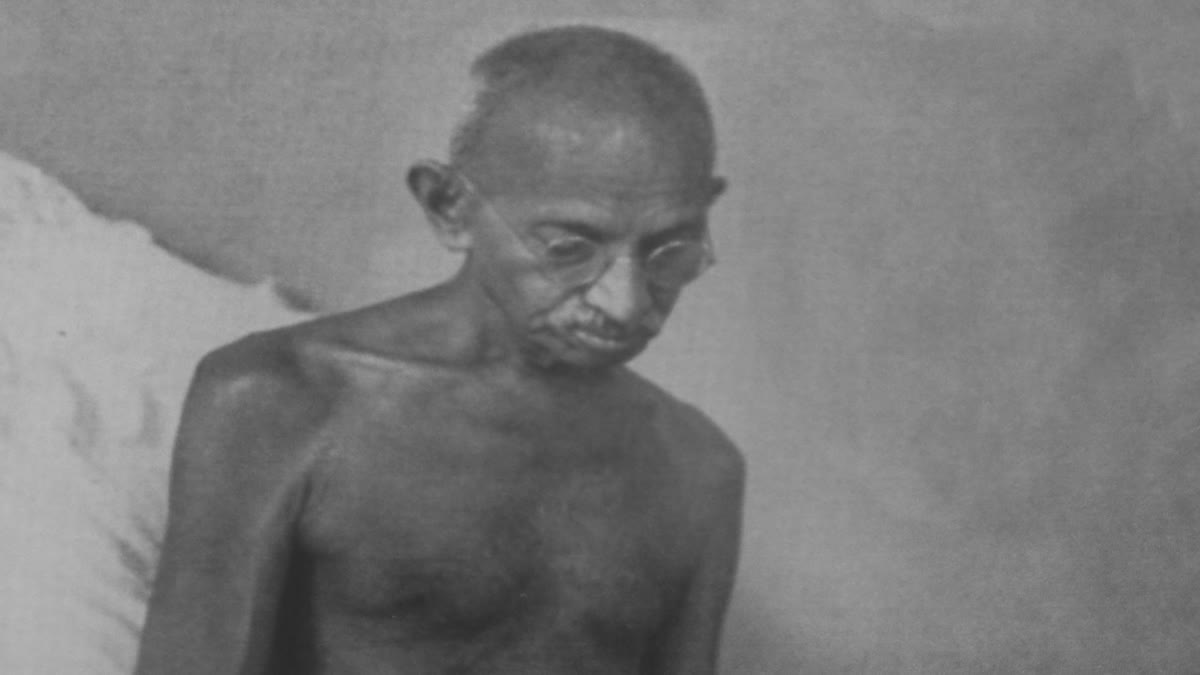Hyderabad: Mahatma Gandhi, born on October 2, 1869, in Porbandar, Gujarat, dedicated his life to leading India in its struggle for freedom against British rule. His principled approach to non-violent resistance left an indelible mark on the world. This article delves into his life, his role in India's freedom struggle, and the tragic event that ended his life.
Mohandas Karamchand Gandhi, lovingly known as Mahatma Gandhi or Bapu, was a preeminent political and spiritual leader of India. He spearheaded pivotal movements such as the non-cooperation movement, Dandi March, and Quit India movement, all contributing to India's path to independence. Gandhi's influence extended beyond India, shaping the Civil Rights movement in South Africa.
Gandhi's strategies like Satyagraha (truth-force) and non-violence proved potent against British colonialism. Starting from Champaran Satyagraha in 1917 to the Quit India Movement in 1942, he ignited the fire for independence across the nation, uniting people from all walks of life.
Mahatma Gandhi's family: Gandhi's father Karamchand Gandhi was the Diwan of Porbandar state of British India. His mother Putlibai was Karamchand’s fourth wife. Having been born in a Hindu family Gandhi strictly followed vegetarianism and fasting as a means of self-purification. At the age of 13, he was married to one year older Kasturba. In 1885, Kasturbai gave birth to their first child who survived only a few days. Later, the couple had four sons. All along his schooling days Gandhi was an average student and passed his matriculation exam from Samaldas College, Gujarat with some difficulty. On 4th September 1888, he travelled to England to study law at the University College London and to train as a barrister, as his family wanted him to be a barrister.
Role of Mahatma Gandhi in the Freedom Struggle
The role of Mahatma Gandhi in the freedom struggle helped shape India’s independence.
- Champaran Satyagraha (1917)
The Champaran Satyagraha of 1917 was the first Satyagraha movement led by Gandhi in India and is considered a historically important revolt in the Indian Independence Movement. It was a farmer's uprising that took place in the Champaran district of Bihar, India, during the British colonial period. The farmers were protesting against having to grow indigo with barely any payment for it. When Gandhi returned to India from South Africa in 1915 and saw peasants in northern India oppressed by indigo planters, he tried to use the same methods that he had used in South Africa to organise mass uprisings by people to protest against injustice.
- Kheda Satyagraha (1917 -1918)
When Kheda, a village in Gujarat, was badly hit by floods, the local farmers appealed to the rulers to waive the taxes. Here, Gandhi started a signature campaign where peasants pledged non-payment of taxes. He also arranged a social boycott of the mamlatdars and talatdars (revenue officials). In 1918, the government relaxed the conditions of payment of revenue tax until the famine ended.
- Khilafat Movement (1919)
Gandhi's influence on the Muslim population was remarkable. This was evident in his involvement in the Khilafat Movement. After the First World War, the Muslims feared for the safety of their Caliph or religious leader and a worldwide protest was being organised to fight against the collapsing status of the Caliph. Gandhi became a prominent spokesperson of the All India Muslim Conference and returned the medals he had received from the Empire during his Indian Ambulance Corps days in South Africa.
- Non-Cooperation Movement (1920)
Gandhi realised that the British had been able to be in India only because of the cooperation they received from the Indians. Keeping this in mind, he called for a non-cooperation movement. With the Congress' support and his indomitable spirit, he convinced people that peaceful non-cooperation was the key to Independence. The ominous day of the Jallianwala Bagh Massacre triggered the non-cooperation movement. Gandhi set the goal of Swaraj or self-governance, which since then became the motto of the Indian freedom movement.
- Dandi March (1930)
The Dandi March began on March 12, 1930, and ended on April 6, 1930. Gandhiji started from his Sabarmati Ashram on the way to the sea. He reached the destination after three weeks and made a handful of salt. The Dandi March made Gandhi a criminal in the eyes of the law.
- Civil-Disobedience Movement (1930)
A pivotal moment in the Indian Nationalist Movement was the Civil Disobedience Movement. The Civil Disobedience Movement is credited with helping India achieve freedom in numerous ways. It was noteworthy in many respects because it was a movement that reached the cities and saw the involvement of women and people from lower castes.
- Gandhi-Irwin Pact (1931)
Gandhi-Irwin Pact was an agreement signed on March 5, 1931, between Gandhiji and Lord Irwin, Lord Irwin in 1931. This pact aimed to resolve the Civil Disobedience Movement and ease political tensions in India. Under the agreement, the Indian National Congress agreed to suspend the Civil Disobedience Movement. The British government promised to release political prisoners. It also allowed Indians to take part in the Round Table Conferences. The Gandhi-Irwin Pact played a big role in India's fight for freedom.
- Quit India Movement (1942)
During the Second World War, Gandhi was determined to strike the British Empire with a definitive blow that would secure their exit from India. This happened when the British started recruiting Indians for the war. Gandhi protested strongly and said that the Indians could not be involved in a war that was in favour of democratic purposes when India itself was not a free country. This argument exposed the two-faced image of the colonisers and within half a decade, they were out of this country.
Gandhi's assassination and legacy: On January 30, 1948, Gandhi was tragically assassinated by Nathuram Godse, a Hindu extremist, in New Delhi. Godse opposed Gandhi's sympathy towards Pakistan, leading to this horrific act. Gandhi's legacy lives on, and he is remembered annually on Gandhi Jayanti, a national holiday in India, for his unwavering commitment to truth and non-violence.



